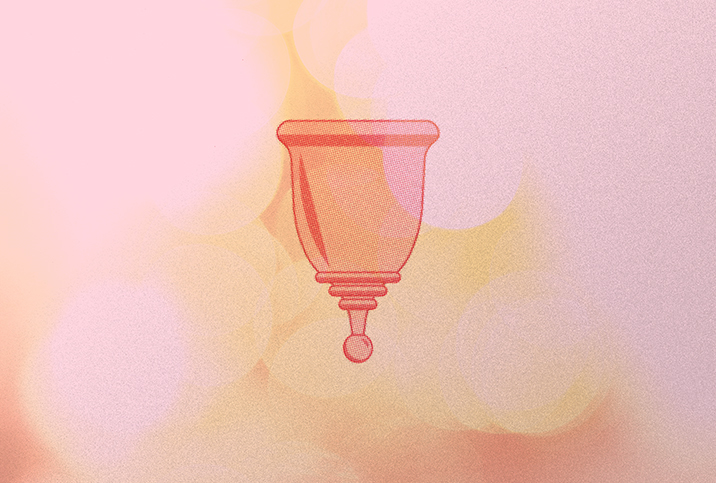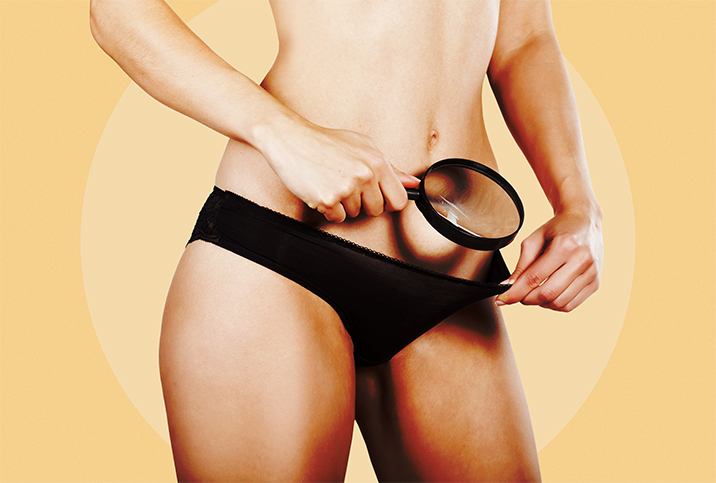Help! I Keep Getting Pad Rash During My Period

Pads, like all other menstrual hygiene products, are meant to make your periods more comfortable. However, they can bring about something unwelcome: pad rash.
How do I know I have pad rash?
Studies on the prevalence of women who get a rash from their pads are limited. But it's not uncommon to experience discomfort after using this type of feminine hygiene product.
"The most obvious and telltale sign of a pad rash is that the rash is distributed on the exact same area of a sanitary pad on the vulva, which can be accompanied by redness, bumps, itching or burning," explained Alyssa Dweck, M.D., an OB-GYN in New York and spokesperson for feminine care brand Intimina.
"In addition, the rash can only occur during or after menses when pads are used," she said.
You might also notice the rash on your inner thighs or buttocks.
What are the causes of a pad rash?
There are several potential causes of a rash, itchiness or other forms of irritation from wearing pads:
Contact dermatitis
One of the most common culprits is contact dermatitis, which refers to an allergic reaction. In this case, your skin might have come into contact with something irritating in your pad.
Contact dermatitis of the vulva, or vulvitis (inflammation of the vulva), can cause itching or burning.
It may be accompanied by other symptoms, such as:
- Redness
- Swelling
- Scaly white patches
However, not everyone experiences all these symptoms.
A pad is composed of various materials, including adhesive, top sheet and back sheet. Some manufacturers also add fragrances, which can lead to irritation, especially if you have sensitive skin.
"In some instances, pads made from synthetic materials may have been exposed to pesticides, bleach or other chemicals during production and can cause skin irritation, leading to a rash," Dweck noted.
Friction
Friction from the pad moving back and forth, while making contact with your skin could cause a pad rash. It's especially easy to get a rash from your pad while doing activities such as running or walking. They easily contribute to irritation and chafing.
This discomfort can intensify in hot and humid weather due to excessive sweating, or if you are wearing a thicker pad such as a maxi pad.
Perspiration or moisture
While the purpose of pads is to collect and retain menstrual fluids as they exit the vagina, some women are sensitive to the moisture that collects while using a pad, both from blood flow and perspiration, Dweck said.
This moisture can also cause irritation and lead to a rash.
Not changing your pad regularly
Wearing a pad for a long duration exposes your skin to more moisture, including menstrual blood, perspiration and vaginal secretions, on a continuous basis.
"The lack of aeration can predispose to rash and even infection," Dweck explained.
A 2018 study published in BMC Infectious Diseases found unhygienic menstrual management practices, including infrequent changing of sanitary pads, may create abnormally moist conditions in the vulvovaginal area.
This situation increases susceptibility to infections such as bacterial vaginosis (BV) and candidiasis (yeast infection).
Changing your pad every four to eight hours, or whenever it feels wet and uncomfortable, is recommended, according to the American College of Obstetricians and Gynecologists (ACOG).
However, the frequency is also dependent on other factors, including:
- Your flow. Some women may find that their periods are heavier during the first few days.
- The type of pad you use. Some types are more absorbent than others.
- Individual needs and preferences.
What are the treatments for a pad rash?
The treatment for a pad rash depends on the cause, but identifying and eliminating the source of the skin irritation may be the best option.
"Changing the brand of the sanitary pad or changing to hypoallergenic pads or a cotton/natural sanitary pad may help," advised Narendra Pisal, M.B.B.S., M.R.C.O.G., a consultant gynecologist at London Gynaecology.
You may also try looking into other period product alternatives such as menstrual cups, tampons and period underwear.
"Also, it's important to look at the products that make the sanitary pad," said Hana Patel, M.B.B.S., a general practitioner in South London who specializes in women's health. "You may be allergic or sensitive to some of these and not be aware of it."
If the cause of the rash is chafing, wearing loose cotton underwear and well-fitting clothing can help to reduce friction. Pisal also noted that using an anti-chafing cream or moisturizer can help create a skin barrier and alleviate the symptoms.
Simply identifying and eliminating the source of the irritation may be the best option.
"Soaking in oatmeal colloid baths, Epsom salt non-fragrant baths and cool compresses can also soothe the irritation," Dweck said.
However, it's best to consult your healthcare provider before applying any topical steroid creams or ointments to the affected area.
In addition, changing pads frequently can prevent too much moisture from accumulating, thus, lowering the risk of skin irritation, buildup of bacteria and infection.
Keeping the area clean and dry can also help prevent pad ash.
When should you see a doctor about a pad rash?
A rash from pads typically disappear a few days after you stop wearing the pads. But, any rash that persists or worsens should be a cause for concern.
Dweck recommended seeking medical care if you experience any of the following symptoms:
- Painful blisters
- Fissures
- Fever/chills
- Flu-like symptoms
- A bull's-eye rash or streaking
- A rash or irritation that expands beyond the vulvar area
Untreated rashes could lead to an infection, so scheduling a visit with a healthcare professional is the best place to begin your treatment and rule out any other potential causes.
The bottom line
It's not uncommon to experience a rash during your period from your pad. If the irritated area spreads or gets worse, and doesn't go away in a few days, contact your doctor.
Do you need a new doctor? Giddy Telehealth offers a convenient online portal. Choose among physicians, therapists and others. Many of them specialize in women's health and offer same-day appointments and video consultations.


















